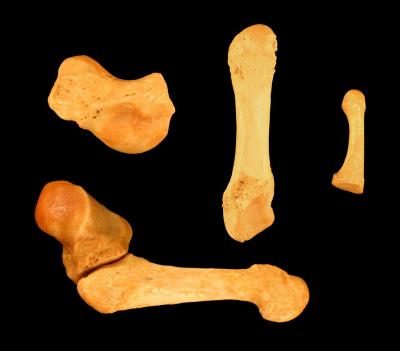A lemur is a monkey-like animal with a long tail and large eyes. Analysis of the first hand bones belonging to an ancient lemur has revealed a mysterious joint structure that has scientists puzzled.
Pierre Lemelin, an assistant professor of anatomy at the University of Alberta in Edmonton, Canada, and a team of fellow American researchers have analyzed the first hand bones ever found of Hadropithecus stenognathus, a lemur that lived 2,000 years ago.
The bones were discovered in 2003 in a cave in southeastern Madagascar, an island nation off the coast of Africa in the Indian Ocean. Hadropithecus is related to the modern-day sifaka, a type of lemur with acrobatic leaping skills.
 The first handbones found of the ancient Hadropithecus lemur reveal a mystery arch by the little finger. Credit: Photo by Dr. Pierre Lemelin, University of Alberta.
The first handbones found of the ancient Hadropithecus lemur reveal a mystery arch by the little finger. Credit: Photo by Dr. Pierre Lemelin, University of Alberta.